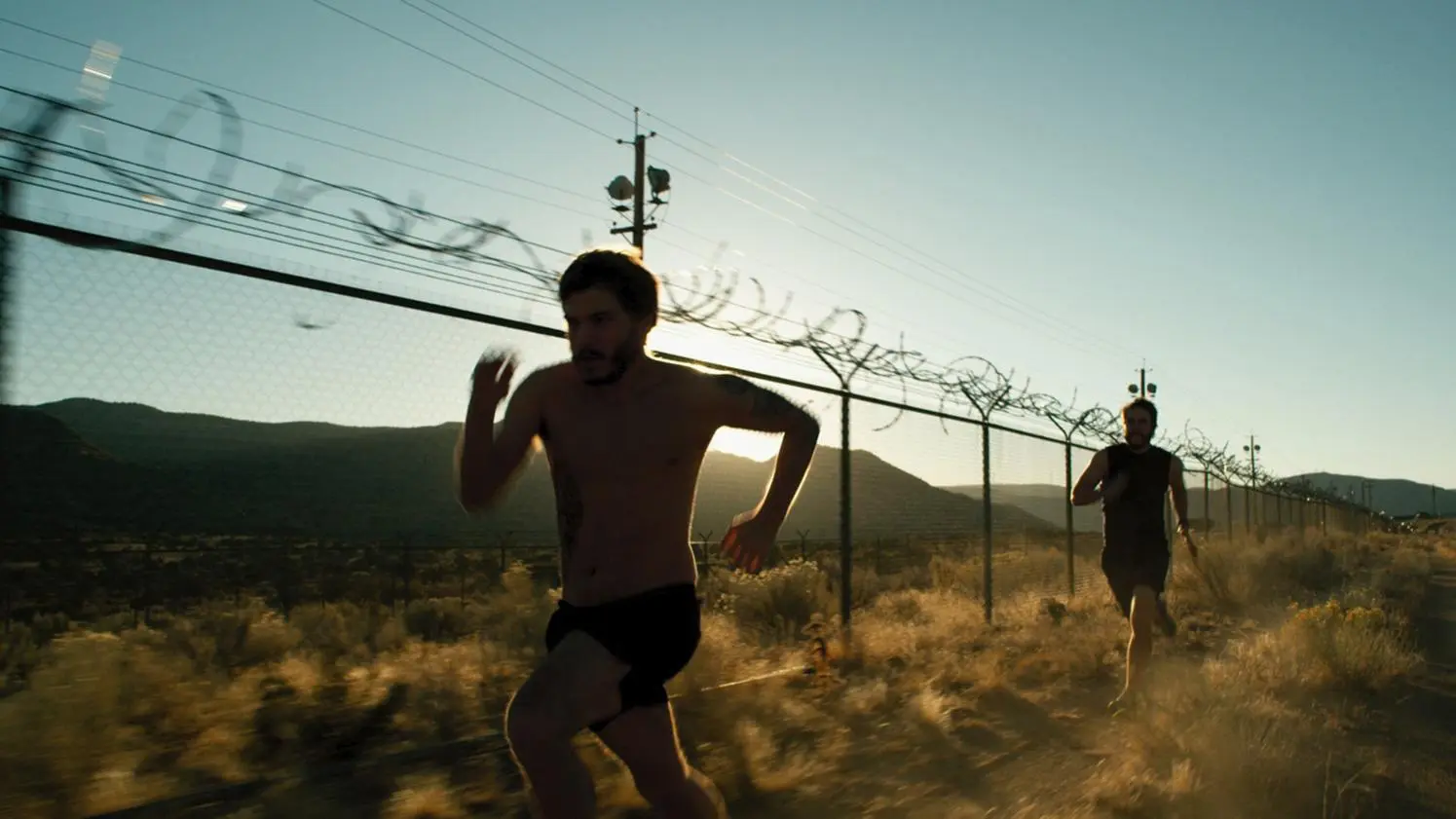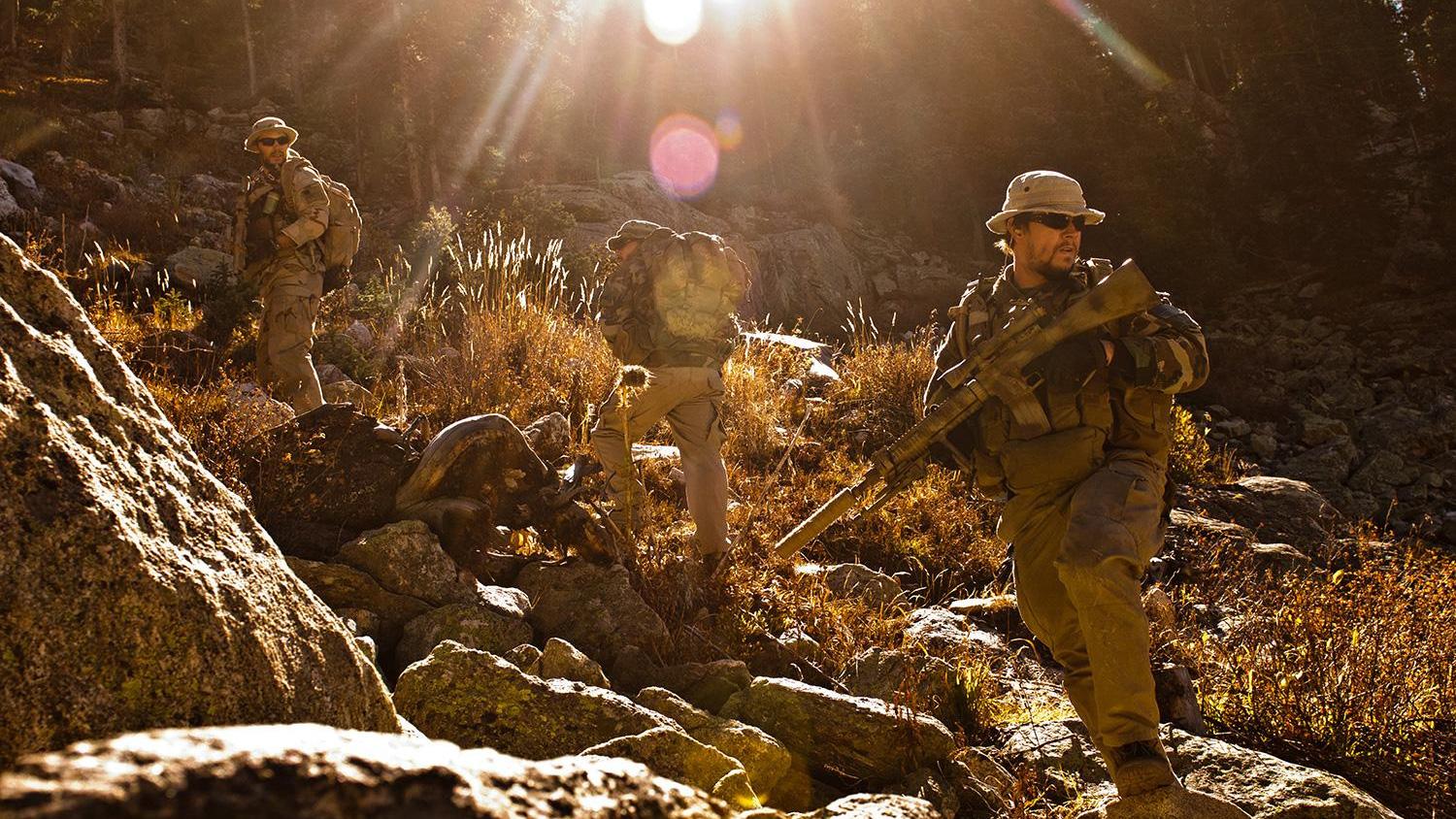Lone Survivor is the sort of movie that kicks your teeth in. As war films go, it’s as tough a watch as you’ll find. Director Peter Berg perfectly captures the tension and the pain of Navy SEAL Marcus Luttrell’s harrowing five-day journey across Afghanistan. The based-on-truth story of 2005’s Operation Red Wings isn’t without its shortcomings, but Berg’s tight production helps to smooth out any wrinkles as the plot careens along from one terrible moment to the next.
Lone Survivor opens quietly enough, offering up a slice-of-military-life on base during wartime. Luttrell (Mark Wahlberg) and his fellow SEALs may be the U.S. military version of supermen, but we also see them as regular fellows with real hopes and dreams. They have wives and girlfriends to come home to, weddings to plan for. The opening half-hour is filled with small moments and brief glimpses at the material cost of war: the lives that these men who made the ultimate sacrifice left behind.
Lone Survivor is the sort of movie that kicks your teeth in.
The principal shortcoming in all of this scene-setting is its emphasis on jargon. Berg’s 2007 effort The Kingdom suffered from the same problem. The director embraces realism to the point of distraction. The rapid-fire pace of Lone Survivor’s intro serves to get us to the heart of the story that much quicker – and that’s a good thing – but keeping up with the rapid-fire military jargon in the run-up to Red Wings is a challenge for those not steeped in soldierspeak.
To Berg’s credit, he stuffs a lot of important information into Lone Survivor’s first act. The personal moments are just as vital as the dense jargon. The problem is that it flies by just a little too quickly once Red Wings moves into the briefing phase. A fan of first-person shooter video games may be versed in some of this language, but the abundance of acronyms and shorthand is difficult for the average viewer to follow.
The jargon never fully disappears later on, but meanings become clearer as action serves to define the words. The goat herders that discover SEAL Team 10 – and ultimately give away the location of the U.S. force – are the subject of a heated exchange over how to interpret the Rules Of Engagement. There’s a stark contrast between the intro’s briefing and the hurried debate over how to deal with these Afghani interlopers.
The goat herder scene is a pivotal trigger moment for the film, and the performances sell it. All of the pain and misery to come hinges on the decisions made in this brief stretch of minutes. The real life goat herders were released unharmed and then quickly gave up the position of the SEALs. Berg’s tight balance between soldier shop-talk and emotional outbursts at the idea of executing civilians – an option that was considered – is what sells the scene. It’s hard to forget while you’re watching that the actual Luttrell and his squadmates faced this very decision; whether or not it unfolded as Berg imagines it did, the scene carries across the indecision the actual soldiers no doubt felt.
Once the chase is on, Berg wields tension like a blunt instrument. Every moment is fraught. Bullets whizz around in all directions, wounds are captured in stark close-ups, and tumbles down Afghanistan’s rocky hills make use of slow-mo to highlight the bone-on-stone impacts. It’s all heightened by sharp sound design that amplifies every juddering assault rifle and concussive blast. The middle act maintains a lightning pace all the way through, and it never lets up on demonstrating the level of physical punishment these SEALs suffered through. It’s graphic, but more than that, it’s just brutal.
Berg elicits top-quality performances out of the four actors at the center of all this chaos. There’s a bit of dissonance in the idea of Wahlberg, clearly showing his 42-year age, being a subordinate, but he acquits himself well of the difficult Luttrell role. Murphy is younger than Luttrell in real life as well, but Wahlberg’s combined age and movie star face disrupts the illusion somewhat.
Once the chase is on, Berg wields tension like a blunt instrument.
The final act can’t hope to reach the heights of the hurried escape efforts that highlight Lone Survivor’s midsection. At first, a slowed pace is the culprit, though chalk that up to being a necessary breather as we transition from Escape to Rescue. More disruptively, however, the specter of Hollywood looms large over this last stretch of story.
The reality of Luttrell’s rescue played out differently than it does on film. While there’s no way to tease out the real truth from what you see on the screen, the timeliness of Wahlberg-as-Luttrell’s extraction feels just a bit too convenient. It’s a forgivable offense, committed in the name of putting a tension-filled cap on this incredible survival story, but the plotting of the third act still strays too far into ‘trite Hollywood ending’ territory.
Minor shortcoming aside, this is Berg at his very best, with no small amount of credit due to cinematographer Tobias A. Schliessler as well. The four stars carry the heavy performance load exceptionally well, somehow infusing light, even humorous, moments into a difficult story. Lone Survivor is the best kind of wartime storytelling, offering a spiritually honest portrayal of boots on the ground that is equal parts devastating, exciting, and entertaining.






